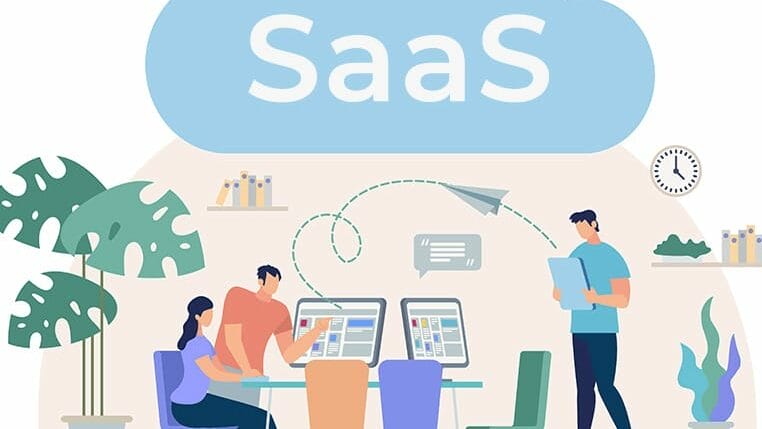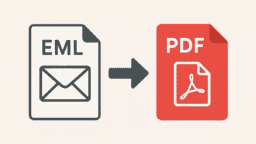Not every business fits into a generic software mold. And yet, for years, that’s exactly what most software asked them to do.
For industries with specific workflows – like wedding venues, fitness studios, or dental practices – general tools often fall short. That shift is pushing more companies toward industry-specific tools – and vertical SaaS is leading the way.
Real estate agents, healthcare providers, fitness studios, wedding venues – each one has its own rhythm, workflow, and quirks. And these new tools are designed to match those exactly.
Instead of bloated dashboards and endless customization, vertical SaaS offers built-in features, automation, and workflows that just make sense for that niche.
The result? Happier users, better adoption, and software that finally feels like it was made for you – because it was.
Horizontal SaaS vs. Vertical SaaS

To understand why vertical SaaS is growing so fast, it helps to look at how it differs from what came before.
Horizontal SaaS tools – think Slack, QuickBooks, or Dropbox – are built to be flexible across industries. They do a lot of things decently well, and they work best when your needs are pretty universal, like storing files or handling invoices.
But what if you run an event venue? Or a salon? Or a clinic?
That’s where horizontal tools often fall short. You’re left tweaking settings, building clunky workarounds, or using five different apps just to manage your daily tasks.
Vertical SaaS, on the other hand, is built from the ground up for your exact business model. It knows your terminology. It reflects your real workflows. It solves your specific problems.
Here’s a quick comparison:
| Feature | Horizontal SaaS | Vertical SaaS |
| Target Audience | Everyone | One industry |
| Customization | Broad features | Built-in niche workflows |
| Examples | Salesforce, Asana | Toast (restaurants), NurturePro (wedding venues) |
| Ease of Use | May need setup help | Feels intuitive right away |
The bottom line? With vertical SaaS, there’s less setup and more “this just works.”
Why More Tech Companies Are Going Vertical?

Here’s the thing: building a generalist app sounds scalable in theory, but in practice, it’s incredibly competitive and hard to differentiate.
That’s why more software companies are going vertical. They’re finding success by solving deeper, more specific problems for smaller audiences.
And it’s working.
Vertical SaaS offers:
- Quicker wins: Less time configuring means faster adoption.
- Stickier retention: Niche users rarely jump ship for broader platforms.
- Stronger referrals: Industry communities talk. When a tool works, word spreads fast.
- Built-in upsell opportunities: Once you’re in a niche, adding new features is easier and more impactful.
What’s really exciting? Small SaaS startups can enter these verticals without needing to compete with massive players. You don’t need to beat Salesforce – you just need to serve one community better than anyone else.
Trends Driving the Rise of Vertical SaaS

So, why is this all happening now? A few big shifts are playing a role:
- Personalization is the New Baseline: Businesses want tools that understand them, not ones they have to force into shape. If the software doesn’t “speak their language,” users bounce fast.
- Niche Experts are Driving the Conversation: Influencers, consultants, and industry educators now shape a lot of buying decisions. And when they recommend software that actually works for their community, people listen.
- No-Code & Low-Code are Speeding Up Innovation: Developers can now build and ship targeted apps faster than ever. That means more room for experimentation and smaller-scale tools to enter the market.
- Remote Work Exposed the Cracks: Let’s be honest – remote and hybrid work didn’t create new problems, it just made existing ones more obvious. Vertical tools help bridge operational gaps by offering mobile-friendly platforms, automated workflows, and everything in one place.
What Makes a Great CRM?

CRMs (Customer Relationship Management systems) are a perfect example of where vertical SaaS shines.
At their best, CRMs go way beyond just storing contact info. They’re the command center for how you manage leads, follow-ups, client communication, contracts, and more.
But here’s the thing: a general CRM might get the job done, but a vertical CRM nail it.
Especially in service-based industries like weddings or hospitality, the client experience is everything. If you don’t follow up fast – or you miss a message entirely – you risk losing the booking.
A great CRM should offer:
- Automation for Client Communication: Automatic follow-up emails, lead nurturing, and tour reminders mean businesses stay top of mind without extra effort.
- An Interface That’s Actually Easy: Nobody wants to spend weeks learning new software. Vertical CRMs are built with their users in mind – no fluff, just function.
- Custom Workflows That Mirror Real Life: For a wedding venue, this might mean a built-in process for tours, proposals, contracts, and payments – all in the right order.
- Meaningful Reports: Metrics like lead conversion rates, seasonal trends, or top-performing inquiry sources help owners make data-driven decisions.
- Smooth Integration: Whether it’s Gmail, calendars, or e-signature tools, your CRM should play nicely with your existing systems.
When all of this works seamlessly, it frees up the team to focus on the people side of the business, where the real value happens.
Industry-Specific CRMs That Actually Fit

A CRM should do more than just keep track of names and emails – it should support how your business actually runs. In industries like weddings, wellness, or real estate, a one-size-fits-all tool can quickly become more of a hassle than a help.
That’s why more businesses are turning to CRMs built specifically for what they do. When the features already match your workflow, there’s no need to spend hours tweaking settings or figuring out messy workarounds just to make the platform usable.
Take NurturePro, for example. It was created just for wedding venues, helping teams send follow-ups, manage bookings, and keep everything organized in one place. ChiroSpring is tailored to chiropractors, with tools for SOAP notes and insurance billing. And Fresha gives salons and spas what they need to handle scheduling, client records, and payments without juggling five different apps.
Instead of forcing generic tools to fit, these industry-specific CRMs work right out of the box, saving time and helping teams offer a smoother, more personalized experience.
Benefits of Vertical SaaS for Niche Businesses

The impact of vertical SaaS isn’t theoretical. It’s changing how businesses run every day – and the advantages are stacking up big time:
- Easy Onboarding: Since the software is built for your exact business, there’s almost no guesswork. Teams can log in and get started fast.
- High Adoption: Let’s be honest – if the tool feels clunky or irrelevant, it won’t get used. But when does it fit your workflow perfectly? Everyone’s on board.
- Focused Features: No one needs 1,000 buttons they’ll never click. Vertical tools skip the extras and include what matters most to that industry.
- Better Data: Tracking metrics that actually make sense for your business, like “tours to bookings” or “repeat guest visits”, is a major upgrade from one-size-fits-all reporting.
- Support That Gets You: Vertical SaaS providers usually have support teams that understand your world. You’re not explaining how your industry works – they already know.
Why Going Vertical isn’t Optional Anymore?

For a long time, businesses made do with general software, even if it didn’t quite fit. But the market has changed. Customers expect faster responses, smoother experiences, and fewer dropped balls. If your tools slow you down or create extra work for your team, that’s not just annoying – it’s expensive.
Generic systems often mean more manual processes, more training time, and more frustrated staff. In contrast, vertical SaaS tools remove the friction by giving teams software that fits how they already operate.
But it’s not just about making things easier. For smaller businesses, vertical SaaS can be a real advantage. When your tools are tailored to how you actually work, it’s easier to stay on top of things, deliver a better client experience, and keep up with larger competitors, without needing a huge team or budget.
It’s not just about keeping up. It’s about finally getting software that helps you move faster and smarter. And when your systems run smoother, your team can focus less on admin tasks – and more on growth, creativity, and doing the work that actually moves your business forward.
The Vertical Future of Software

Horizontal SaaS isn’t going anywhere – but vertical SaaS? It’s growing fast, and for good reason.
Niche businesses don’t want to spend months hacking generic software into something useful. They want tools that just fit.
And as more SaaS founders realize they don’t need to win the whole market – they just need to win one audience – the vertical trend will keep accelerating.
We’ll see more specialized tools, smarter workflows, and software that finally feels like it’s on your team.
The best part? Vertical SaaS is helping smaller businesses finally compete. They’re no longer stuck with clunky workarounds or tools that weren’t built with them in mind. Now, they’ve got software that actually fits – without the trade-offs.
As tech continues to evolve, the expectations of business owners are evolving with it. People want tools that respect their time, understand their industry, and get the job done without unnecessary complexity. That’s exactly what vertical SaaS delivers – and why it’s not just the future of software, but the future of how businesses operate.
Whether you’re building SaaS or buying it, the shift is clear:
The future is vertical.






